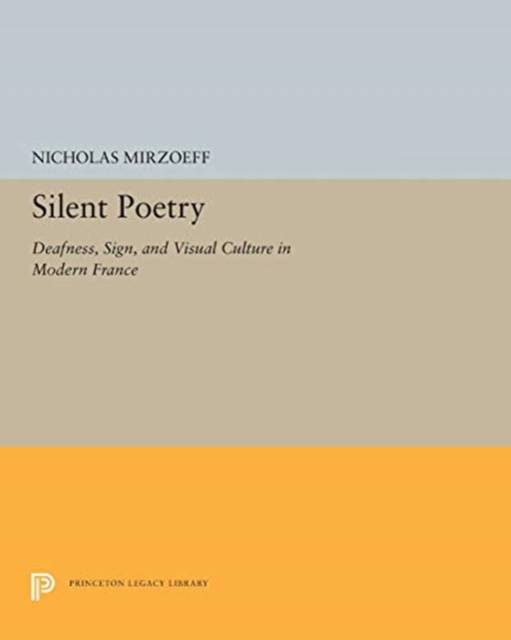
- Retrait gratuit dans votre magasin Club
- 7.000.000 titres dans notre catalogue
- Payer en toute sécurité
- Toujours un magasin près de chez vous
- Retrait gratuit dans votre magasin Club
- 7.000.0000 titres dans notre catalogue
- Payer en toute sécurité
- Toujours un magasin près de chez vous
Description
This book explores the dynamic interaction between art and the sign language of the deaf in France from the philsopheRs to the introduction of the sound motion picture. Nicholas Mirzoeff shows how the French Revolution transformed the ancienT regime metaphor of painting as silent poetry into a nineteenth-century school of over one hundred deaf artists. Painters, sculptors, photographers, and graphic artists all emanated from the Institute for the Deaf in Paris, playing a central role in the vibrant deaf culture of the period. With the rise of Darwinism, eugenics, and race science, however, the deaf found themselves categorized as "savages," excluded and ignored by the hearing. This book is concerned with the process and history of that marginalization, the constitution of a "center" from which the abnormal could be excluded, and the vital role of visual culture within this discourse.
Based on groundbreaking archival and pictorial research, Mirzoeff's exciting and intertextual analysis of what he terms the "silent screen of deafness" produces an alternative hIstory of nineteenth-century art that challenges canonical view of the history of art, the inheritance of the Enlightenment, and the functions, status, and meanings of visual culture itself. Fusing methodologies from cultural studies, poststructuralism and art history, his study will be important for students and scholars of art history, cultural and deaf studies, and the history of medicine, and will interest a general audience concerned with the relationship of the deaf and the larger society.
Nicholas Mirzoeff is Assistant Professor of Art History at the University of Wisconsin.
Spécifications
Parties prenantes
- Auteur(s) :
- Editeur:
Contenu
- Nombre de pages :
- 336
- Langue:
- Anglais
- Collection :
- Tome:
- n° 5245
Caractéristiques
- EAN:
- 9780691655567
- Date de parution :
- 15-01-19
- Format:
- Livre broché
- Format numérique:
- Trade paperback (VS)
- Dimensions :
- 203 mm x 254 mm
- Poids :
- 662 g

Les avis
Nous publions uniquement les avis qui respectent les conditions requises. Consultez nos conditions pour les avis.






